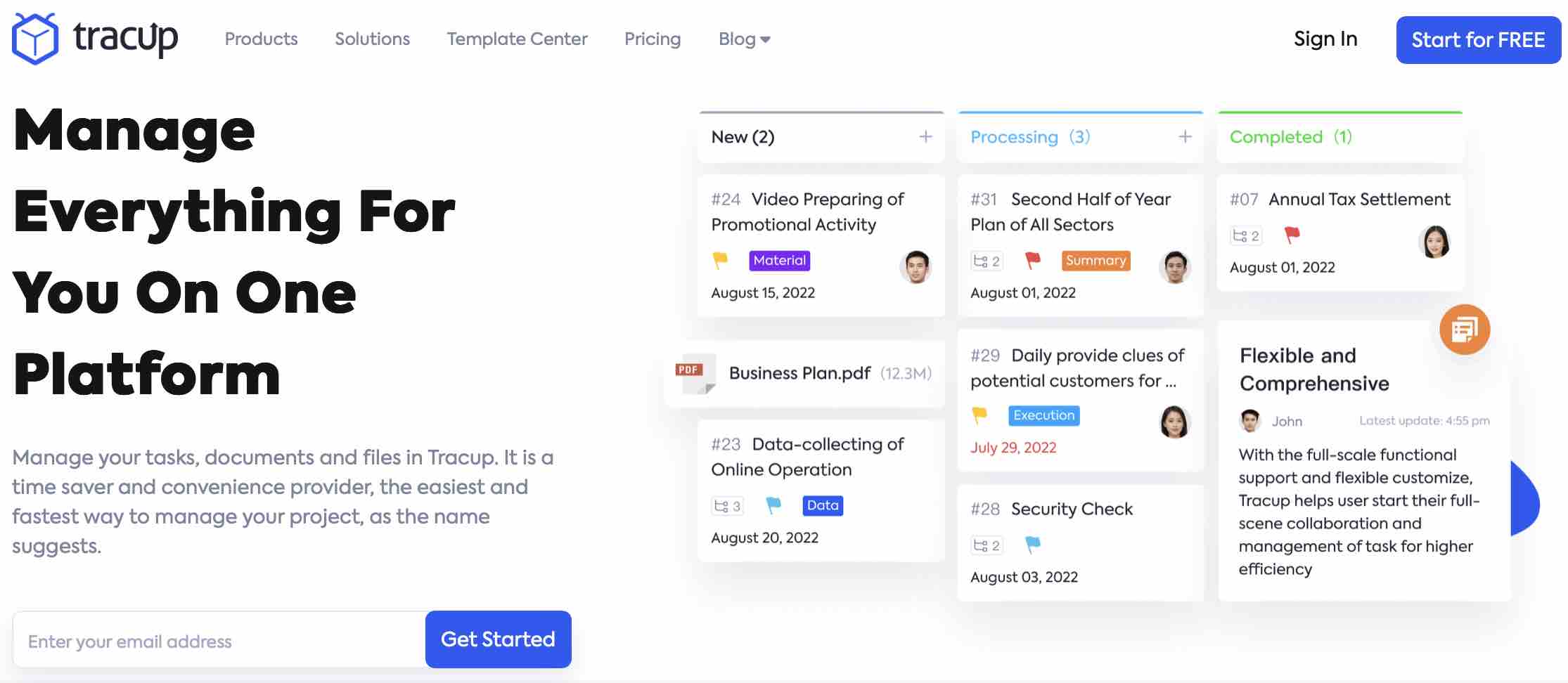Which Activity Program Management Tool Match Project Manager Better
What kind of activity program management tool should the project manager choose? To help you decide, we analyzed two popular tools and found out what makes them so special, also researched the most important features when choosing a tool. Let’s take a look!
Whether you’re a freelancer or building small teams for enterprise-level companies, an activity program management tool is essential for project managers to stay efficient and organized.
When a project manager is disorganized and unable to prioritize the most important tasks, completing a task can become overwhelming. This is where an activity program management tool can help.
Project managers can use such a tool to keep track of campaigns, files, messages, and all information relevant to a specific task. A tool for activity management centralizes all of these things so that they can be accessed and revisited from a single platform.
An activity program management tool can alleviate much of the time-consuming work involved in locating critical information and communicating with team members.
What’s the difference?
Trello and Tracup are the two most popular activity program management tools today. Both are industry-leading tools used for team collaboration by project managers, and they both have free versions that you can start using right away.
However, there are significant differences in functionality, integrations, workflow, pricing, and features between the two.
Trello is the go-to platform if your primary activity program management tool is a kanban board, as that is what it does best. Its kanban board is extremely user-friendly, and you may extend Trello’s functionality using power-ups.
Tracup may be a better option if you want additional functionality and flexibility, as well as a free and reasonable price.
Both Trello and Tracup allow you to divide activity program projects into specified categories and groups of tasks with certain assignees. Gantt charts (beginning with the Business Plan), subtasks, and configurable dashboards are also available. However, neither program can accomplish everything, so you must become acquainted with both to choose which is ideal for you.
If you’ve never used an activity program management tool before, you might be unfamiliar with Tracup or Trello. Both provide activity program management for project managers but the essential distinction is in the aspects they emphasize. For job management, the activity program management mainly relies on its kanban board.
What exactly is a kanban board?
It is a visualization tool that uses cards to represent tasks (along with due dates for each card), columns to represent process phases, and swimlanes to represent various teams and activities. Because of its simplicity, a kanban board is one of the most effective ways to track project progress.
Tracup, on the other hand, has a kanban board, but it is not the application’s primary focus. Tracup, on the other hand, includes more powerful task management options, including extensive customization.
Users may assign specific tasks to assignees in a feature, narrative, or project using Tracup. There’s also a calendar view and a to-do list with each team member’s current tasks (as well as their deadlines).
In essence, Tracup succeeds at more complicated projects requiring much coordination, whereas Trello shines at simpler jobs. As a result, the software you select will be highly influenced by the scope of your project.
An activity program management tool‘s UI relies upon its kanban-style features, which include:
Boards. Every project is housed on kanban board. They maintain track of all your tasks as they go through the project, from ‘things to do to ‘finished tasks.’ Even if you’ve never used a kanban board before, the boards are extremely visual and simple to understand.
Lists. Each board will also have a list view that reflects the project’s phases. To-do, doing, and done are examples, but you can also build custom fields. As a result, if your project has distinct stages, you may modify the list to reflect them.
Cards. Finally, the cards on each board indicate certain duties. Each card provides all the information a team member requires to complete the task, including the due date and specific criteria. You slide the cards through each step to visualize progress on each assignment (to-do, doing, done). Each Trello card includes a wealth of useful information, such as:
Members. These are the task assignees, which let you know who is in charge of what at all times.
Dates of completion. Include explicit deadlines for each Trello card to keep your team members engaged and on track.
Attachments. This is a useful feature since it allows you to attach anything to the card, just like you would an email. That way, your team will have access to all of the files, resources, and attachments they need to complete the task directly from Trello.
Checklists. On Trello, this tool allows you to divide tasks into smaller ones. You may create a checklist for each card that includes all of the steps to completion. This allows you to track progress in real-time, which is useful.
Calendar. This makes it simple to identify projects and activities that are running late and bring them back on track. The Calendar app also integrates Trello cards with color-coded organizing, and you can export your calendar to link with other third-party applications.

Who are Trello most for?
Trello is ideal for freelancers who need to keep track of a few daily activity program tasks because of its simplicity. It’s also a great tool for smaller teams who don’t want to waste time dealing with a high learning curve.
That’s because the Trello board layout is so simple and user-friendly that anyone can learn how to use it without any instructions.
Trello is a good choice if you’d rather get started on a new activity program project right away rather than study the ins and outs of Tracup’s more extensive capabilities. It’s also free to use (as long as no power-ups are added), which makes it even more tempting to project managers.
It’s important to realize that not all Trello add-ons are free. Some are, however, the majority are premium power-ups that demand an extra cost. In this regard, Tracup has the upper hand because all of its functions are included by default, eliminating the need to purchase add-ons.
Trello, in addition to these main functions, has numerous outstanding integrations, including Salesforce, Slack, Dropbox, Outlook, Gmail, InVision, and Jira.
These connections make it simple to track project manager’s success without having to update any of your existing tools. For example, if your team frequently uses Salesforce, connecting it with Trello will allow you to seamlessly transfer information between the two.

Who are Tracup most for?
Tracup, on the other hand, may be a better alternative if your task is more intricate and has numerous moving pieces.
Tracup can assist you in keeping track of a large number of activities and projects at the same time, and accomplish a lot more with task dependencies than Trello.
Task dependencies in activity management refer to the exact sequence in which certain activities must be done. Tracup allows you to simply add dependencies to any job, which is a big bonus. You won’t have to worry about some sections of the project being completed out of sequence.
Tracup is built around its proprietary Tracup Workspace paradigm. It visualizes your work projects, team, and individuals executing the job through a variety of graphs, boards, and calendars.
Tracup in particular, depicts your work timeline as a graph loaded with all of your tasks.
Each task may be assigned to an assignee, who has their dashboard. They may view their given responsibilities, the deadline, and a variety of other project-related information.
Attachments and hotlinks may be included in each task description to ensure your team has all they need to finish the project.
The timeline display is customizable and includes drag-and-drop capabilities, allowing you to modify changes on the fly (such as for unexpected setbacks or getting ahead of schedule). These timetables may be used to expedite marketing campaigns, event planning, product launches, and other activities.
Tracup has most of Trello’s features, and other notable features include an integrated calendar view. Unlike Trello, Tracup has a calendar view that you may use without having to download an add-on. Its visualization features make it simple to discover scheduling gaps and overlaps, which is a bonus.
Tracup, like Trello, can interact with a variety of third-party apps and tools, such as Figma, Slack, Jira, Google Drive, YouTube, Loom, and Tracup’s inbuilt video recording function, among many more.
Tracup has many useful and adaptable features that easily win this matchup.
Implementing an activity program management tool may be quite beneficial to project managers. It simplifies workflow procedures, integrates with the company’s unique business strategy and requirements, and makes job monitoring easier. Some systems may have a longer learning curve than others, but once everyone on your team is up to speed, you can centralize all work assignments, deadlines, and communications.
Again, you must discover the perfect tool for a project manager, which may need some trial and error. Begin your search for the finest tool with our list of suggested activity program management tools, and begin optimizing your activity program management processes for efficiency.
While both tools are activity management powerhouses, Tracup wins on a tiebreaker. It’s a more powerful and configurable tool than Trello, which is why it wins.
Now you’ve learned whether an activity program management tool is right for the project manager here. Are there any other great tools on the market that we left out?
Try Tracup Free and Start Your Productivly Development
Using Tracup to Unlock Powerful Agile Workflow WITHOUT ANY Agile Experiences Required